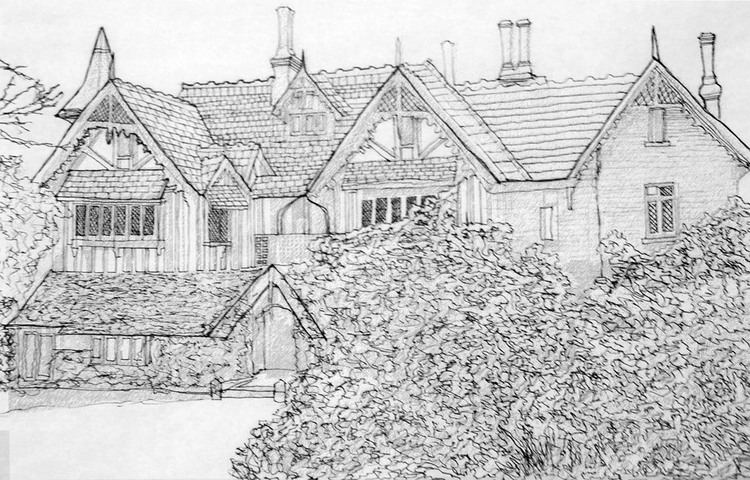Name Guyon Purchas | Died June 4, 1940 | |
 | ||
Robert Guyon Whittlesey Purchas (6 September 1862 – 4 June 1940) was an Australian architect whose great ability can be seen through three Western District homesteads built during his early years. He was the son of prominent architect, civil engineer, and surveyor, Albert Purchas.
Contents
Early Life and Education
Guyon was born on 6 September 1862 in his father's mansion in Fitzwilliam Street, Kew. Born during the Victorian Gold Rush, he spent his childhood in suburbs of Kew and Hawthorn that surrounded the expanding port and commercial city of Melbourne. His secondary education was completed at a leading private secondary school, Kew High School, after which he sat for the matriculation examination of the University of Melbourne in February 1882. The subjects Guyon pursued reflects the strong influence of his father and upon matriculation he immediately started working for his father. Concurrent with this he started a civil engineering course at the University of Melbourne.
First Commission
Guyon failed a number of subjects during his the second year of his civil engineering course, the reason for this was his first big commission. His father deemed one year of architectural experience to be worth three years of study and handed him the commission to build a homestead at Camperdown for Thomas Manifold. Thomas had decided to build the homestead, which he named Wiridgil, on a property five miles from Lake Purrumbete. Guyon's designs for Wiridgil revealed elements of Albert Purchas's Glenara. Subtle differences in detail and an unusual plan hinting to extensive additions suggests that Wiridgil was built in several stages, yet the construction was of a highly uniform standard and the volume of coherent unity.
Depression Years
During this period Guyon was unproductive from an architectural point of view. From 1888 to 1895 Guyon's name disappears from the tender lists. Coincidentally these were the ending years of the Boom and the arrival of the great depression. In 1893 Guyon married the widow Mary Teague, whose son Eric Teague would later become his partner in the firm Purchas and Teague. Many believe after marriage Guyon speculated a good deal in property and thus Guyon's inactivity from 1888 to 1891 are for the same reasons. When the banks closed he and his family moved to Western Australia where the discovery of gold gave the colony a surge of prosperity. Upon his return to Melbourne in 1895 he immediately received a commission for a new ward at the Women's Hospital, the first of many small additions.
At the end of 1896 Guyon went into partnership with William Shields. Their first project was a large hotel at Woodend whose designs suggest an exceedingly restrictive brief. The designs show an unusual lack of sensitivity for Guyon's work, but the quality was no doubt present.
In 1898 Guyon designed the large mansion, Tay Creggan, near the Yarra in Hawthorn. The mansion is said to be a copy of a large home in Sussex, and only the constructional details and working drawings were his work. Although the mixture of styles would warrant a survey to discover the stylistic origins of the building, nothing can truly be revealed about Guyon's architecture.
Purrumbete
As of 1898, Guyon designed at least eight buildings; Of these eight Purrumbette can be considered a monument of Guyon's design sensibility and shows that his creativity was not lost during the depression. Designed for the Manifold family in the Western District, Purrumbete was in great contrast to Woodend Hotel. The earliest remaining portions of the homestead were probably erected around 1860, with extensions added soon after creating the L shaped section that stands nearest the lake. Purrumbete proved a much more difficult task than Wiridgil with the contours unsuitable for a new building facing the lake. All the elements of spatial design reflect some degree of approach similar to that of the Modern movement, though still maintaining an architectural vocabulary of that day thus creating an unusual Federation Arts and Crafts style. Nonetheless Guyon shows an understanding of their objectives such as a logical progression of functional spaces and the use of solid and void as expression. Despite the long history and many alterations Guyon's sensitivity allowed him to ensure each part contributed to the unity of the whole building.
